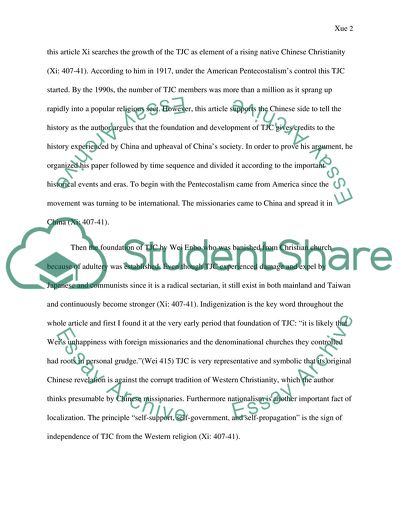Cite this document
(Christianity and Chinese Popular Religion: the Success of Christianity in China Literature review Example | Topics and Well Written Essays - 1750 words, n.d.)
Christianity and Chinese Popular Religion: the Success of Christianity in China Literature review Example | Topics and Well Written Essays - 1750 words. https://studentshare.org/religion-and-theology/1789189-christianity-and-chinese-popular-religion-the-success-of-christianity-in-china
Christianity and Chinese Popular Religion: the Success of Christianity in China Literature review Example | Topics and Well Written Essays - 1750 words. https://studentshare.org/religion-and-theology/1789189-christianity-and-chinese-popular-religion-the-success-of-christianity-in-china
(Christianity and Chinese Popular Religion: The Success of Christianity in China Literature Review Example | Topics and Well Written Essays - 1750 Words)
Christianity and Chinese Popular Religion: The Success of Christianity in China Literature Review Example | Topics and Well Written Essays - 1750 Words. https://studentshare.org/religion-and-theology/1789189-christianity-and-chinese-popular-religion-the-success-of-christianity-in-china.
Christianity and Chinese Popular Religion: The Success of Christianity in China Literature Review Example | Topics and Well Written Essays - 1750 Words. https://studentshare.org/religion-and-theology/1789189-christianity-and-chinese-popular-religion-the-success-of-christianity-in-china.
“Christianity and Chinese Popular Religion: The Success of Christianity in China Literature Review Example | Topics and Well Written Essays - 1750 Words”. https://studentshare.org/religion-and-theology/1789189-christianity-and-chinese-popular-religion-the-success-of-christianity-in-china.


